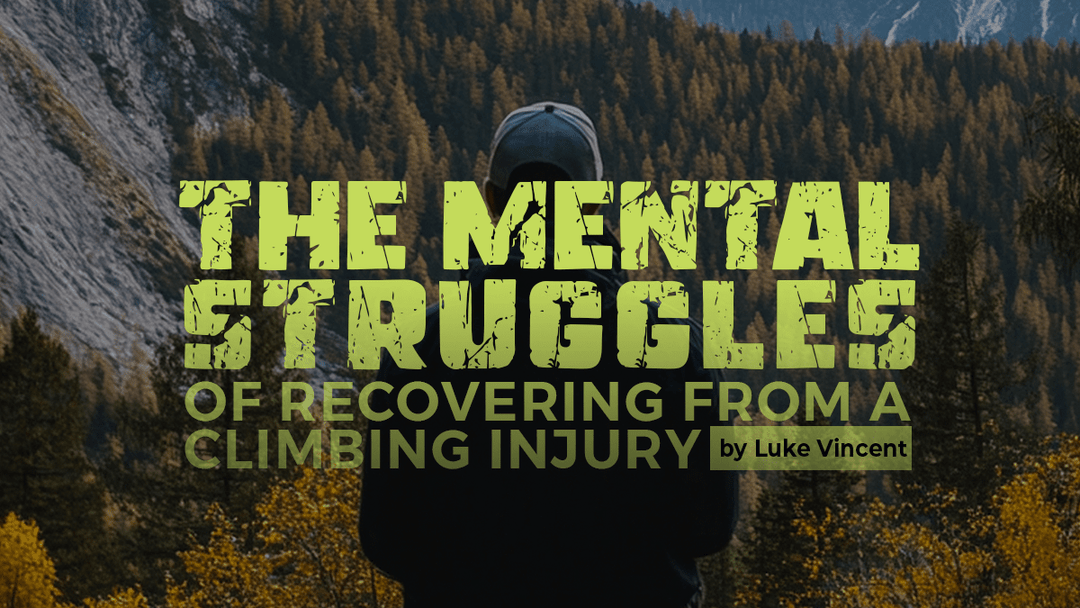Does Chalk Really Matter for Rock Climbing?

Chalk and rock climbing have a rich history that dates back to the 1950s. It is believed that the legendary rock climber, John Gill, introduced chalk to the climbing community after taking a gymnastics course at Georgia Tech. His innovative use of chalk on boulders and cliffs around Georgia paved the way for its widespread adoption among climbers.
You may have watched climbing in the Olympics and wondered why everyone carried bags of a white substance, they kept coating their hands in. Is it just a way to trick your mind into believing you will climb better? Does chalk matter for rock climbing?
Why do Climbers Use Chalk?
Like John Gill did back in the 50s, chalk is used in gymnastics to absorb sweat and limit the possibility of slipping. While some climbers never use it and swear that they don't need it, most rock climbers do.
Climbers use chalk to dry their hands and create more friction between their skin and climbing holds. When climbing, you constantly pull yourself up a wall using just your fingers, and you won't last long if they're sweaty!
Sweat builds up on the skin, creating a slippery barrier that makes it harder to hold on to anything. This is also why weightlifters use chalk—they need the dryest conditions to hold onto those heavy weights!
Chalk not only dries out your skin to enhance friction but also plays a significant role in boosting climbers' confidence. When faced with a challenging move, climbers often chalk up to mentally prepare themselves. This ritual, sometimes done unconsciously, instills a sense of security-with dry hands and added chalk, the chances of slipping are significantly reduced.
Different Kinds of Chalk
Even though there are many kinds of chalk, they all do the same thing: dry out your skin. So, what type of chalk should you get? Here are the most popular kinds of chalk:
Powder chalk
Powder chalk is crushed down super fine and easy to apply and distribute on your hands. Because of its quick application, powder chalk is the fastest way to dry your hands on roped routes. However, very fine chalk can also result in applying too much, creating a slippery barrier. Make sure to blow off the excess from your fingers after you chalk up.
Chunky Chalk
Chunky chalk is the same as powder chalk but requires the climber to crush it in their hands. Because it requires you to crush it yourself, you likely won't break it down to where it's super fine. This is a good option for boulderers!
Liquid Chalk
Liquid chalk is the least messy climbing chalk. It comes in a tube that you squeeze out onto your hands (be careful; a little goes a long way) and spread on the bottoms of your hands and fingers. When it's dry, your hands will turn stark white!
Colored Chalk
Colored chalk is chalk dyed to mimic the color of rock. Some climbing areas have banned using white chalk because it can be unsightly for some outdoor enthusiasts. If you plan on climbing outside, learn the rules of what chalk is allowed.

How to Use Climbing Chalk
Simply stick your hand in your chalk bag (use a chalk bag to secure your chalk) and wiggle your fingers around or squeeze your hand closed. You can stick both hands together using a chalk bucket (a large chalk bag made for bouldering).
You can pat your legs or blow off the excess to make sure you don't have too much. This is less messy with a chalk bucket because you can rub your hands together inside it.
Reapply as needed while climbing or because you want extra confidence, and climb on!
Post-Chalk Skincare
Thoroughly wash your hands at the end of your climbing session to avoid drying out. Chalk is a powerful substance and can cause excessive drying if not cleaned off your skin correctly.
Perform the opposite of drying out your skin and apply a moisturizer or climbing salve to help speed up your skin's recovery. Dry skin can lead to cracking and splitting, which doesn't make climbing an enjoyable experience




